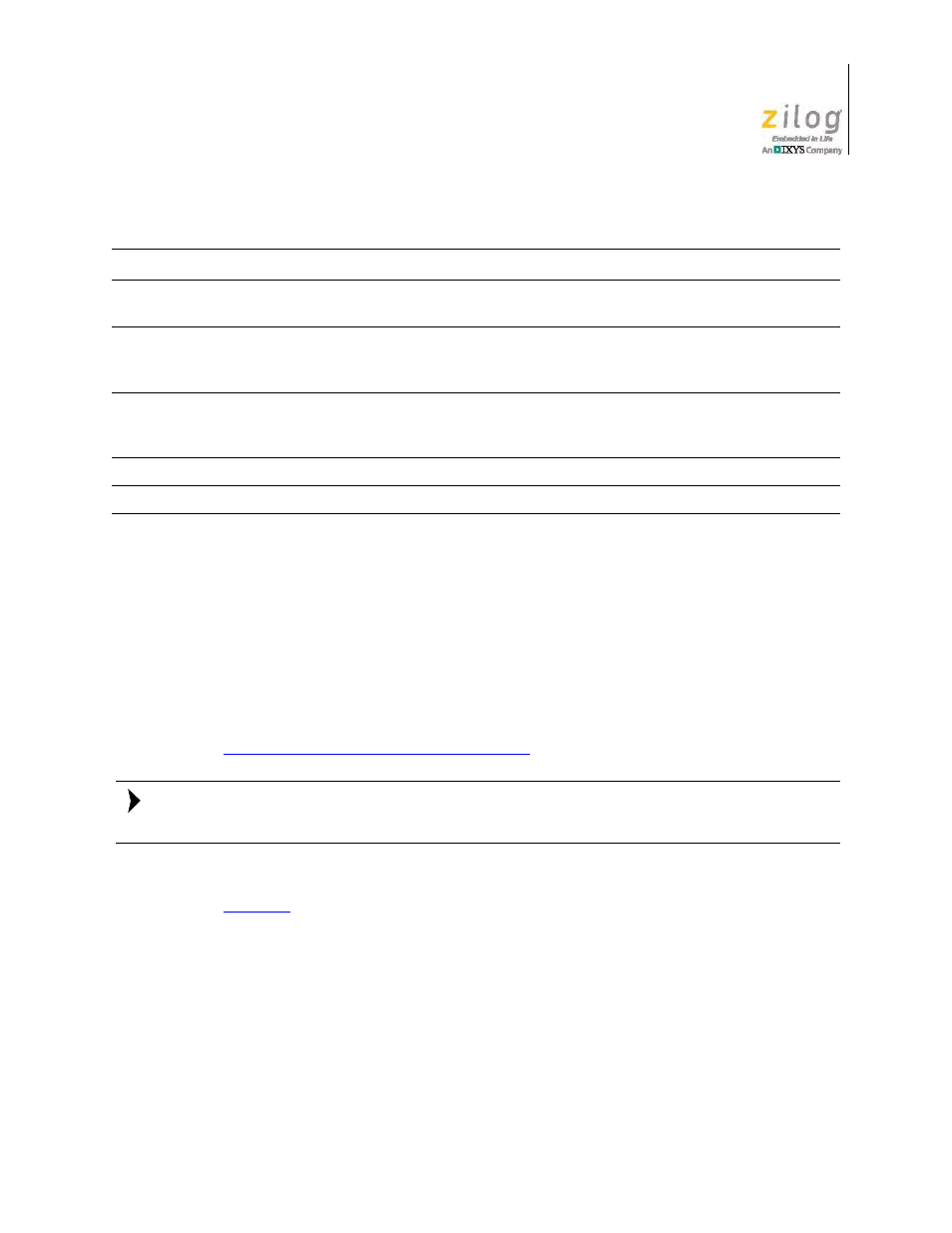Graphic and text string display – Zilog ZUSBOPTS User Manual
Page 21

UM025603-0814
Graphic and Text String Display
Zilog Educational Shields
User Manual
14
Graphic and Text String Display
When using the
LEDString
command, characters display on a 4x7 LED matrix. Because
bits PA4 and PA5 are reserved for use by the UART, Port A is not used for graphics. How-
ever, the full 5x8 matrix is available when the UART is not in use; i.e., when the USB A to
Mini-B cable is not connected to the J5 console connector.
The following brief example demonstrates how to program a character in a 5x5 matrix. In
this example, the ZDS II development environment is used instead of the command shell.
A complete program that displays one text string a character at a time can be found in the
ZDS II Developer Studio for the ZNEO CPU
The ZDSII development environment defaults to the C language. However, writing pro-
grams in Assembly language is also supported.
Example.
Write the program below to display the letter Z on a 5x5 matrix, as shown in
#include
#include "zneo.h"
Void LetterZ(void) {
PAOUT = 0x7C;
PBOUT = 0x08;
PCOUT = 0x10;
PDOUT = 0x20;
PEOUT = 0x7C;
}
Void main(void){
confpwm
Configures the PWM cycle period in kHz (1–20); an absence of parameters displays the
current setting. Syntax: confpwm 2.
setpwmduty
Configures the PWM channel’s duty cycle from 0 to 100%. An absence of a duty parame-
ter will display the current setting of the selected PWM. Syntax: setpwmduty xx [DD],
which xx is a PWM number in the range 1–6, and DD is a duty cycle in the range 0–100.
startshield
Start a shield that is plugged into the board. Use the List parameter to see the list of
shields. Syntax: startshield xxxx, in which xxxx is the shield’s name or list to see the avail-
able shields.
LEDString
Set a string to display on LEDs.
LEDInterval
Set an interval between character displays on all LEDs (defaults to 500 ms).
Table 1. ZED Test Shield Commands (Continued)
Command
Description
Note:
